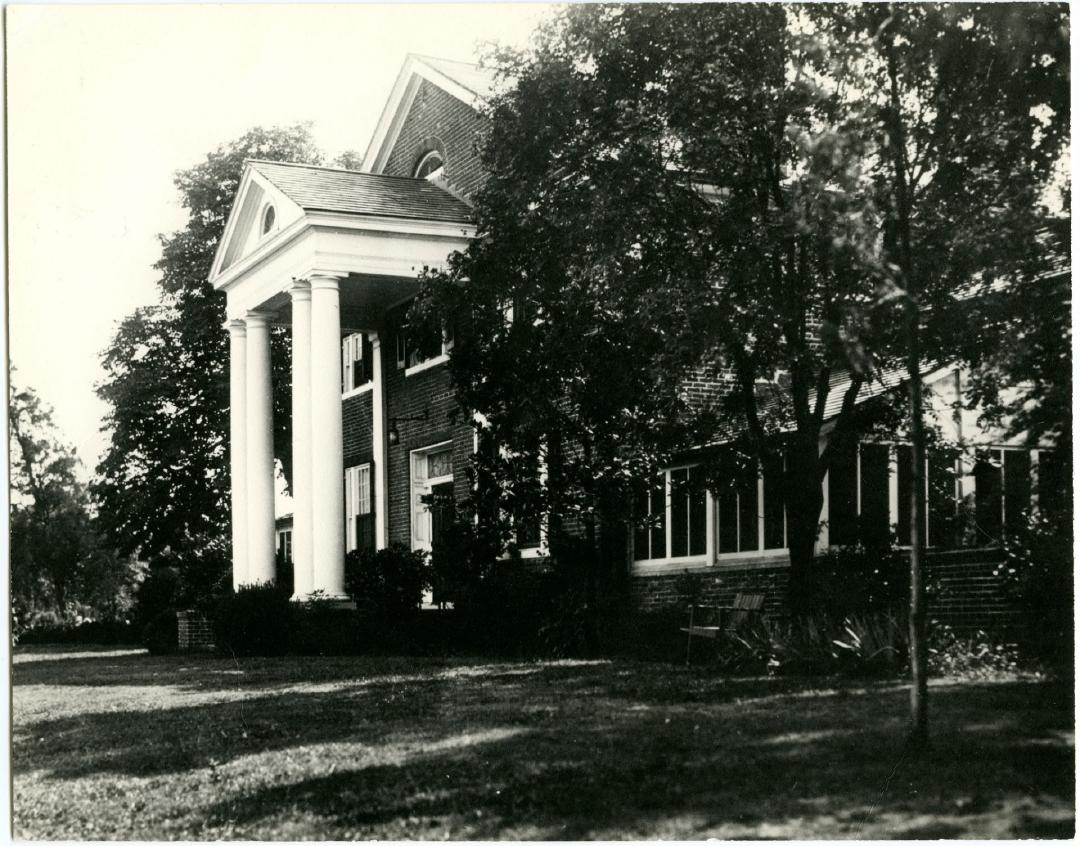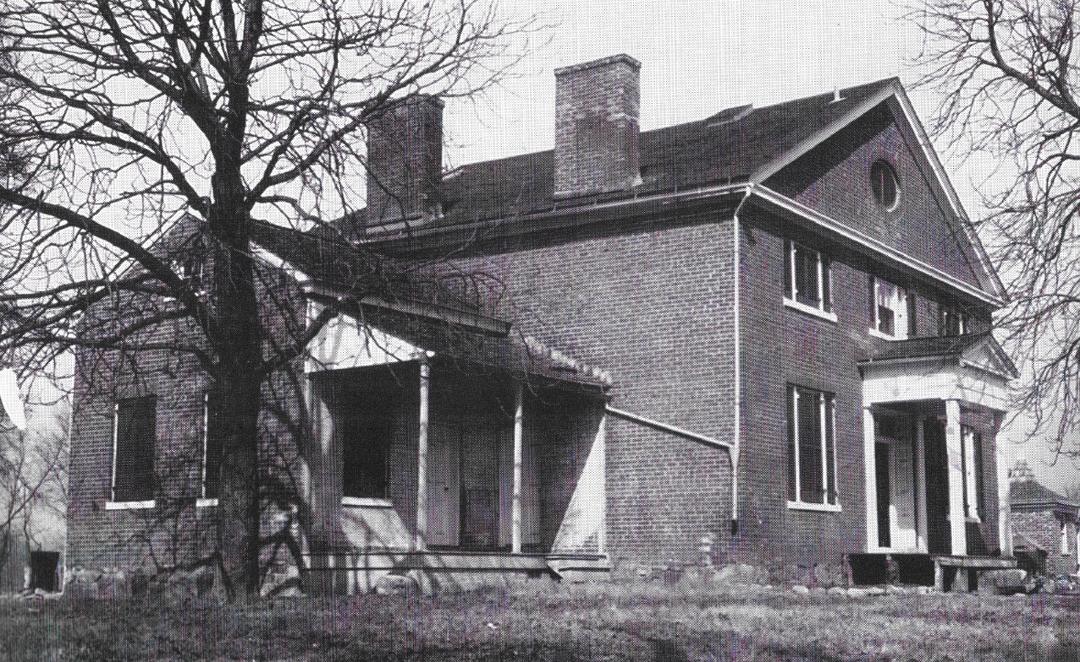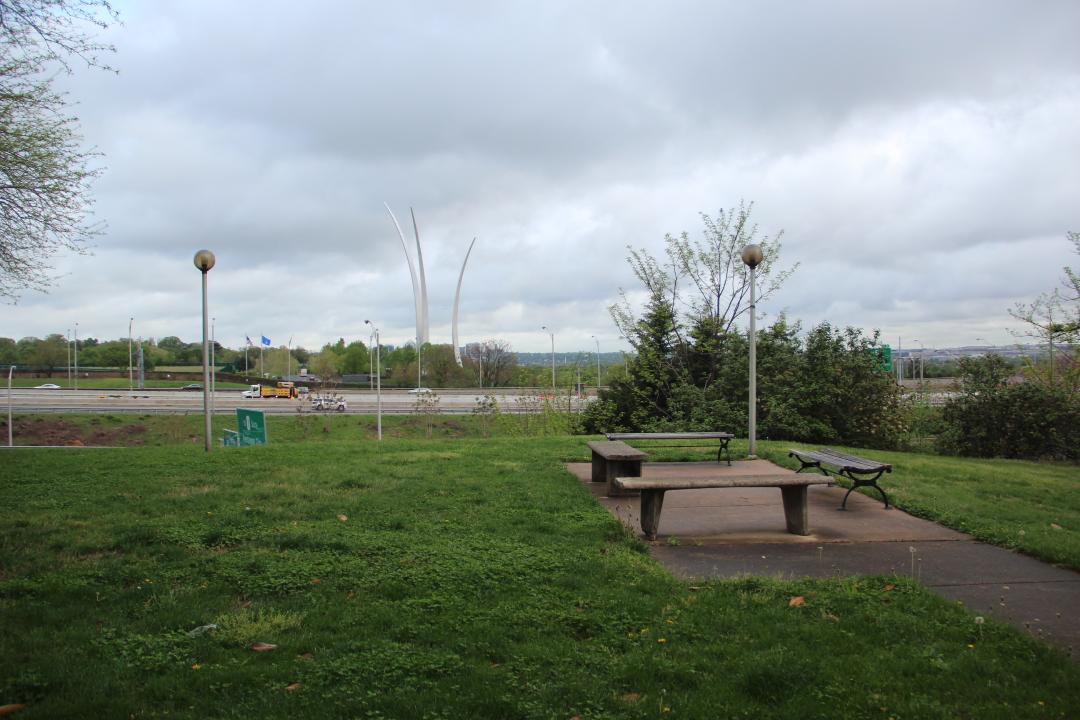James Roach and Prospect Hill

Roach began construction of his home on Hoe Hill in 1840 and completed it the following year, while the area was still a part of the Capital City prior to the 1846-7 retrocession of former Virginia lands. He named the manor "Prospect Hill."
In the 1960s, Arlington and Northern Virginia lost one of their most priceless and unique historical assets with the rezoning and destruction of the antebellum dwelling of early settler James Roach, standing majestically on Arlington Ridge and overlooking the Capital City area. The dwelling dates from Arlington's early history after the Revolutionary War and the establishment of the Republic, when the area was still a part of the Capital City.
In the late 1830s, Philip Roach arrived in Alexandria from his former home in Ireland with his wife, two daughters, and son, James. He immediately found land to establish a New World home for himself and his family. In due course, he focused on one of the most desirable and attractive pieces of real estate in Northern Virginia. The site was well elevated, located about a mile from the Potomac River, and today comprises approximately the northern portion of Arlington Ridge, parts of Crystal City, and Pentagon City and their nearby environs.
The land was part of the 1669 original patent of ship captain Robert Howson that John Alexander purchased, passed to his son Philip, and eventually conveyed in 1811 to William Henry Washington. It was taken over by the Bank of the United States in 1836 and then purchased by James Roach on June 29, 1837.
The senior Roach died on June 9, 1838, at the age of 50, and James, still then residing in Alexandria, promptly looked around for a proper location on which to build his home on his new property. He selected a place
on the north end of what was in later years to be identified as Arlington Ridge. The site provided a spectacular panoramic view of the Potomac River, the National Capital building, the President's mansion, the Mall, and many other places in the core of the Capital City. It was identified on land records as "Hoe Hill" as recorded by the late Arlington historian Eleanor Lee Templeman in her Arlington Heritage. The unique Hoe Hill overlook site was a part of the Alexander estate on which that family had built their own home, known as Abingdon, in the early 1740s, located about a mile away on the banks of the Potomac River.
Roach began constructing his home on Hoe Hill in 1840 and completed it the following year while the area was still a part of the Capital City before the 1846-7 retrocession of former Virginia lands. He named the manor "Prospect Hill."
Many years later, in describing Roach's home, Templeman wrote in 1959, some five years before it was demolished upon rezoning, as follows:
"The house is beautifully proportioned and detailed, with a two-story center section and one-storied wings on each side. Brick-walled pathways lead to servant's quarters which are also of brick. The original huge brass locks remain on the doors. One of the most interesting rooms is the kitchen with the oven built into the wall beside the massive fireplace."
When still alive, Philip and his son James energetically established themselves in profitable businesses. They constructed a gristmill on Four Mile Run and brick and masonry plants on or near Roach's Run (earlier known as "Mill Branch on Shallow Creek"). After Philip died, James pursued the businesses. He was given masonry contracts for much of the stonework for the Alexandria Canal, and the building of the Alexandria, Loudon, and Hampshire Railroad became the Bluemont Division of the Southern Railway and then the electric line to Leesburg and Bluemont.
The brick factory on Roach's Run also provided materials for building his home on Prospect Hill. In his time, James Roach would be active in local civic affairs and serve in many important positions. At the time of the retrocession of Virginia lands of the District of Columbia in 1846-7, Roach served as one of five commissioners appointed to oversee the referendum for the citizens of Alexandria County on the question of approving the return of the lands to Virginia. Roach voted in favor of retrocession.
At the start of the Civil War, Union soldiers occupied the property due to its strategic location and cut down trees to build Fort Runyon and Fort Albany. Roach and his son were arrested and held in prison. James Roach, his wife and daughter, died during the war.
Images


